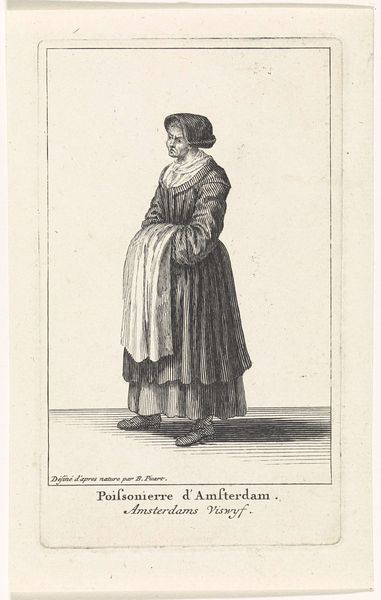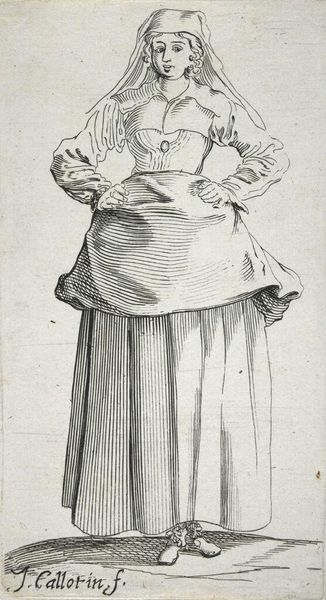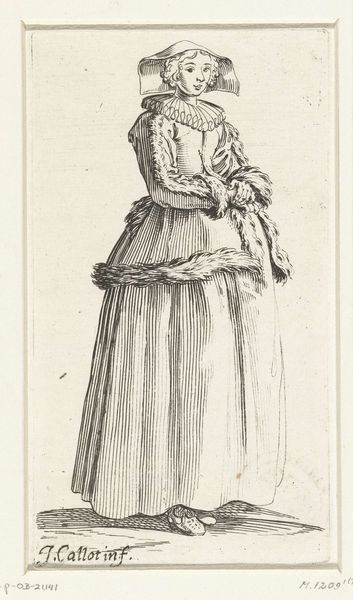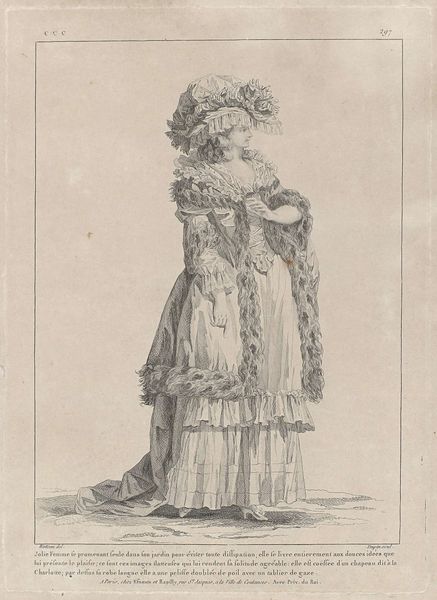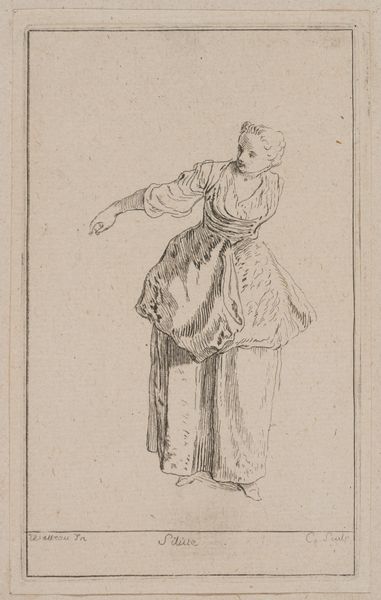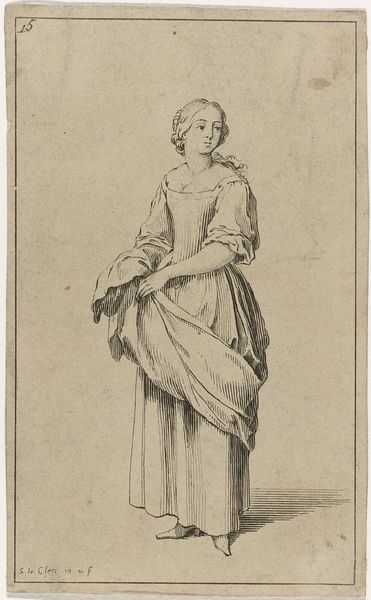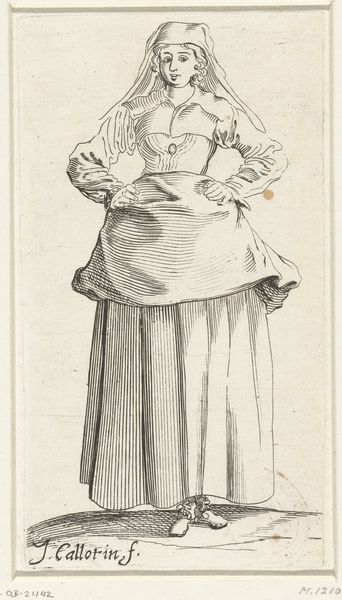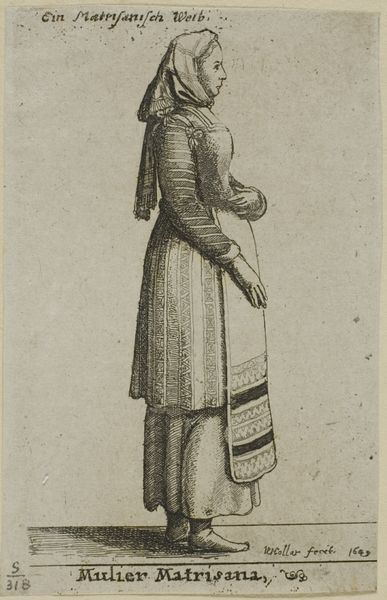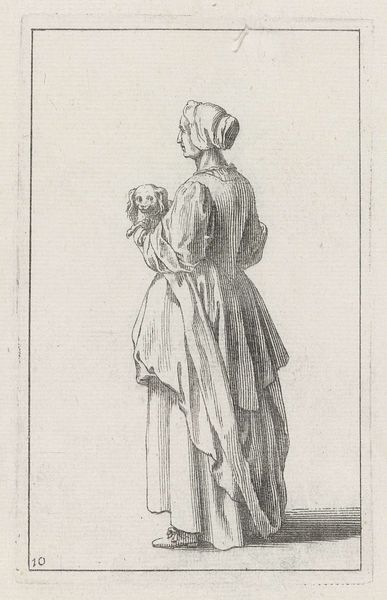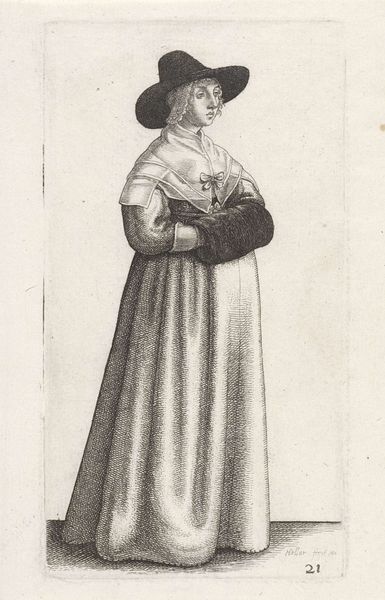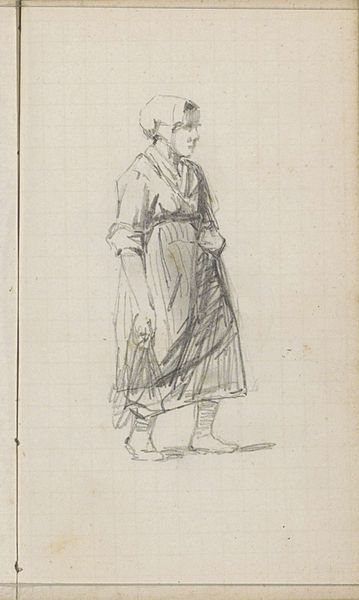
print, engraving
#
portrait
#
baroque
# print
#
figuration
#
line
#
genre-painting
#
engraving
Dimensions: height 149 mm, width 97 mm
Copyright: Rijks Museum: Open Domain
Editor: This is "Dienstmeid, van voren gezien, een arm voor de buik," from 1685, by Sébastien Leclerc I. It's an engraving, a print, depicting a maidservant. I'm struck by how directly she's looking at us; it’s an almost confrontational gaze. What stands out to you? Curator: It’s interesting you noticed her direct gaze. To me, that’s a window into understanding her perceived role, especially in the context of 17th-century Dutch society. The Baroque era wasn't just about elaborate drama; it also delved into the everyday. Leclerc, through line and form, suggests a symbolic representation of labor and domestic life. Her clothing, the way she holds herself, they all tell a story. What do these visual elements say to you? Editor: I guess I see a sense of pride in her stance. She's not ashamed of her work. Maybe it's the hand on her hip, like she’s ready for anything. But what about the details, like her clothing? Does that have symbolic meaning too? Curator: Absolutely. Consider the practical yet layered nature of her attire. Layers often symbolize status, but here, it speaks to functionality and perhaps even a concealed complexity. The headscarf, the slightly undone blouse…these small visual cues build a narrative. The image carries collective memories about the Baroque era, a tension between grandeur and the grit of everyday life. Don't you think it's powerful how so much is conveyed through this "simple" portrait? Editor: Yeah, I do. I originally saw a confrontational gaze, but now I see a person who occupies an ambiguous place in the social hierarchy and in Baroque art as well. It definitely prompts more questions than answers at first glance! Curator: Precisely! It invites us to think about those hidden narratives embedded in even the simplest of images.
Comments
No comments
Be the first to comment and join the conversation on the ultimate creative platform.
